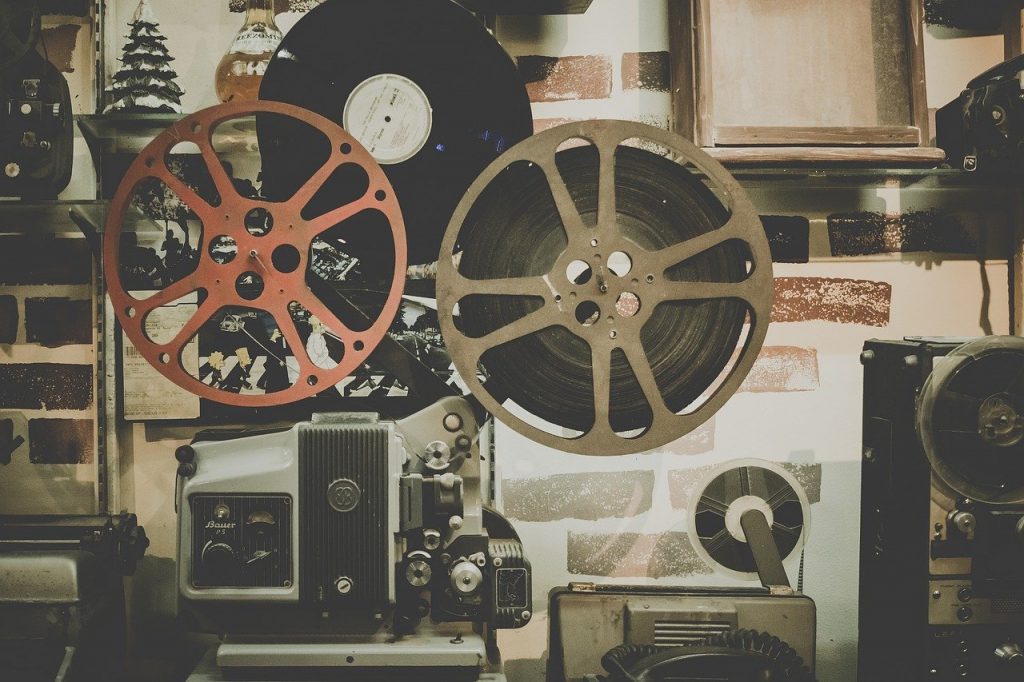Cine reels and projectors are incredible feats of film technology. They took filmmaking into a new age, and we’ve come a long way since. Many young people today have probably never even seen a cine reel in real life, knowing only the digital technology that has become so popular and come to completely dominate filmmaking and viewing as we know it. But we wouldn’t be where we are today without cine reels, so lets take a look at some of the fantastic things about this technology that you probably didn’t know.

Film Reels were Invented in 1888
The history of filmmaking is a long one, and it dates back earlier than you might think. In 1888, a Frenchman named Louis Le Prince patented a 16-lens device that combined a motion picture camera with a projector to create a more sophisticated film projector. His film was called Roundhay Garden Scene and it was just a two-second clip showing his family members and friends dancing in circles outside an estate. But the history of filmmaking had to start somewhere.
There are Three Main Types of Cine Film
There are three main kinds of cine film: Super Standard (regular) 8mm, 9.5mm and 16mm. The millimetres refer to the width of the film. 16mm film is still very popular and used today in the professional film industry. 8mm is often found in home cine reels; if you have homemade films on reels, chances are they are 8mm.
Cine Reels are About 1000ft
A standard film reel that runs at 25fps is 1000 feet long. But despite the length, it will only produce about eleven minutes of footage. So when films played in cinemas, the projectionists had to change reels many times during a single motion picture so that it could keep going uninterrupted.

Most Films were on Two Reels
To save on shipping costs, most reels were two-reelers, so instead of a single 1000ft reel of film, they were doubled up. This allowed them to cut down the potential of human error by half when a projectionist would switch reels in the middle of films to help improve the viewer experience.
Titanic was 17.7 Reels Long
With a runtime of three hours and fifteen minutes upon its release in 1997, Titanic required a monstrous amount of cine reels to play the whole thing. Each copy was 17.7 reels long, consisting of over 17,700 feet of film. That’s over three miles just for a single film!
The Average Film Weighed Around 60lbs
Considering how heavy films were back then, it probably makes you appreciate the fact that DVDs are lighter than air, and that digital downloads weigh nothing at all. Each 1000ft of film weighed around 5lbs, and since the average film tends to be approximately 90 minutes, most films would use around nine film reels. Add on the additional weight of the reels themselves, and you’re looking at a total weight of around 60lbs! Imagine having to lug that amount of weight around every time you wanted to watch your favourite film.

Most Cinemas Have Switched to Digital
In 1999, digital cinema projectors were trialled in some cinemas. This involved storing the film on a computer that was then sent to the projector electronically. By 2006, the advent of higher 4K resolution digital projection meant that more and more cinemas opted for this method of showing films. By 2013, it was estimated that 92% of cinemas in the US had converted to digital.
The majority of cinemas across the world are now using digital video projectors to show their films. This means that films no longer have to be shipped to cinemas in reels anymore, making it a much simpler process to get films shown across the world. However, some directors like Quentin Tarantino and Christopher Nolan lobbied large studios to commit to continue using 35mm film, ensuring that its production will continue for some time yet.
The advantage of digital over film reels is that the projectors have no moving parts expect fans, they can be operated remotely, are more compact, won’t break the film by scratching the reels and they allow for much easier storage and distribution. They can also play live broadcasts from theatres, which has become a popular medium of watching on-stage performances.
Considering all the benefits of abandoning the old cine reel medium, why don’t you do the same? If you’ve got some old homemade films lying around, gathering dust in the attic, make sure you do a cine film to DVD conversion with Cine2DVD today. We have many years of experience doing conversions, and we can ensure that your precious memories are protected on a more reliable format that you can share with your family, no matter where they are. Contact us today to find out more.
